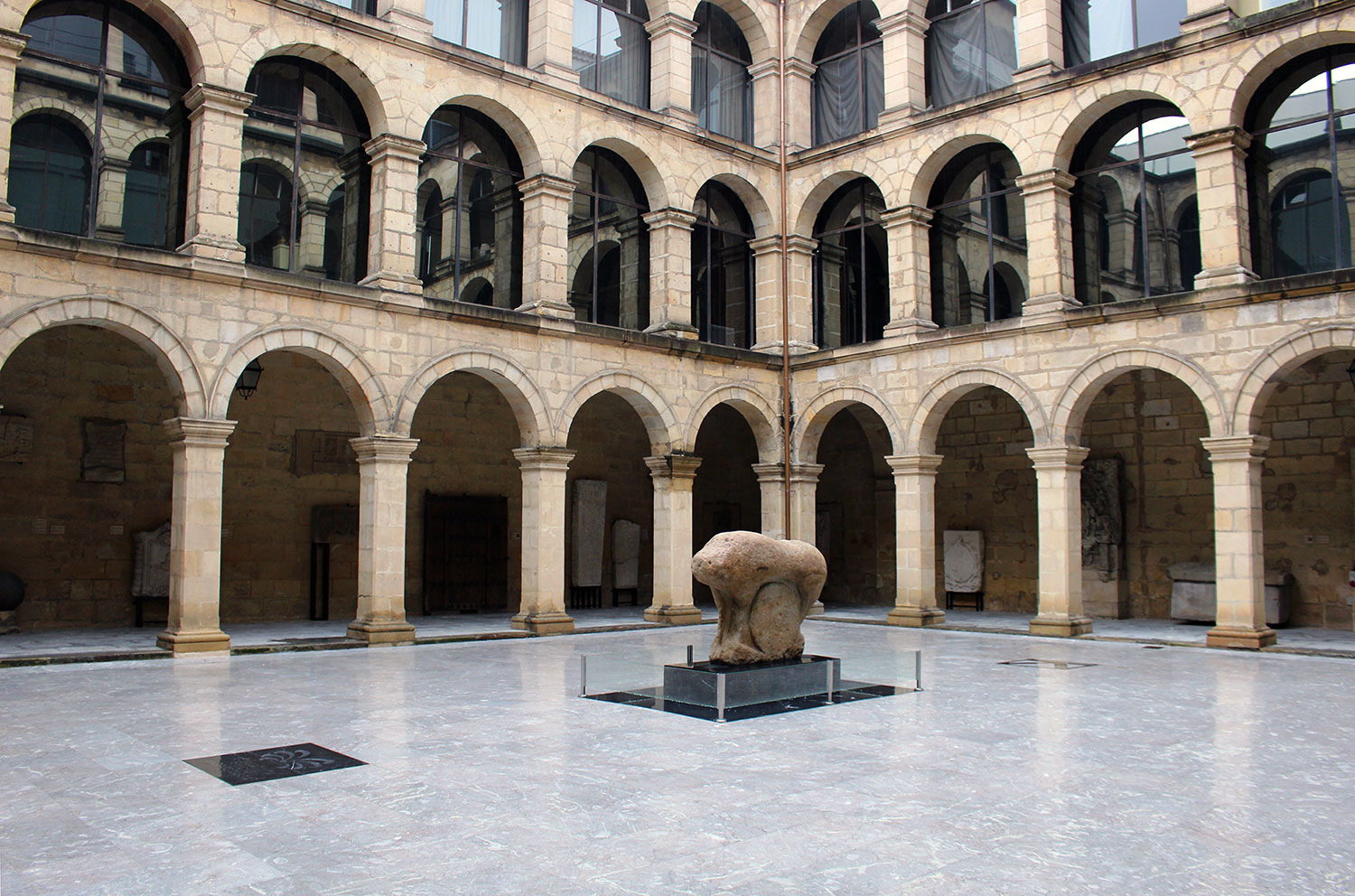BURUKO ZAPIAK
Burua estali ala ez, emakumearen adin eta egoera zibilaren araberako hautua izan ohi zen. Ezkongabeek ilea agerian eramaten zuten koloretako zintaz lotutako txirikorda batean edo bitan bilduta, euren dontzeila egoeraren adierazle. Zenbat eta luze edo ugariagoa, orduan eta eder eta dotoreagoa zen gaztea.
Buruko zapia emakume ezkonduen bereizgarri zen. Zenbait lekutan, ezkontza eguneko errituen artean zegoen pieza hau lehenengoz janztea. Kolorea eta lotzeko moduaren konbinaketak ugariak baziren ere, bi ziren ohikoenak: itxita, mototsa inguratuz, edota atzetik zabalduta, txirikordak zintzilik utziz. Buru-orratz zurien laguntzaz lortzen zuten emakumeek zapia egun guztian zehar bere lekuan mantentzea.
Kode bereizgarri hauek XX. mende hasieran hasi ziren desagertzen. Hiriko modak eraginda, neska gazteak zapia erabiltzeari utzi eta buru gainean bildutako motots harrotu batean jasotzen hasi ziren.
PAÑUELOS DE CABEZA
Cubrirse o descubrirse la cabeza solía ser una elección que dependía de la edad y el estado civil de la mujer. Las solteras llevaban el pelo a la vista recogido en una o dos trenzas atadas con una cinta de color, indicando que su estado era el de doncella. Cuanto más largo o abundante fuera el cabello, más bella y elegante era la joven.
El pañuelo para la cabeza era el distintivo de las mujeres casadas. En algunos lugares, vestir por primera vez esa prenda estaba incluido entre los ritos del día de la boda. Aunque las combinaciones resultantes del color y la manera de atarlo eran numerosas, las más habituales eran dos: cerrando el pañuelo, rodeando el moño, o con apertura trasera, dejando las trenzas colgando. Las mujeres lograban mantener el pañuelo en su sitio durante todo el día mediante la ayuda de alfileres blancos.
Estos códigos distintivos comenzaron a desaparecer al principio del siglo XX. Influenciadas por la moda urbana, las jóvenes empezaron a dejar de utilizar el pañuelo y comenzaron a recogerse el pelo en un moño alto sujeto sobre la cabeza.
HEADSCARVES
Covering or uncovering the head used to be a choice that depended on the woman's age and marital status. Unmarried women wore their hair uncovered in one or two plaits tied with a coloured ribbon, indicating that their status was that of a maiden. The longer or thicker the hair, the more beautiful and elegant the girl was.
The headscarf was the symbol of married women. In some places, wearing the garment for the first time was included in the rituals of the wedding day. Although the resulting combinations of colour and the manner of tying it were numerous, the two most common were closing the scarf, encircling the bun, or extending it at the back, leaving the braids hanging down. Women managed to keep the scarf in place throughout the day with the help of white pins.
These distinctive codes began to disappear at the beginning of the 20th century. Influenced by urban fashion, young women began to abandon the headscarf and started to wear their hair in a high ponytail on top of their heads.
DES FOULARDS POUR LA TÊTE
Se couvrir ou non la tête était un choix qui dépendait de l’âge et de l’état civil de la femme. Les femmes célibataires portaient leurs cheveux nus, retenus dans une ou deux nattes attachées avec un ruban de couleur, indiquant leur état de demoiselle. Plus les cheveux étaient longs ou abondants, plus la jeune fille était belle et élégante.
Le foulard de tête était le signe distinctif des femmes mariées. Dans certains endroits, le port pour la première fois de cet accessoire faisait partie des rituels du mariage. Malgré la diversité des couleurs et des façons de l’attacher, deux étaient privilégiées : avec le foulard noué, entourant la queue de cheval, ou en le passant derrière, en laissant les nattes retomber. Les femmes parvenaient à maintenir le foulard à sa place toute la journée à l’aide d’épingles blanches.
Ces codes distinctifs commencèrent à disparaître au début du XXe siècle. Influencées par la mode urbaine, les jeunes filles cessèrent de l’utiliser pour retenir leurs cheveux dans une queue de cheval qu’elles attachaient sur le haut de la tête.

